
Martín Fernández de Navarrete y Ximénez de Tejada, was a Spanish noble, grandson of the Marquess of Ximenez de Tejada, knight of the Order of Malta, politician and historian. He was a Spanish senator and Director of the Spanish Royal Academy of History (1824-1844).
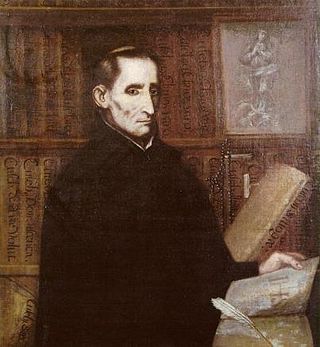
Juan Eusebio Nieremberg y Ottín was a Spanish Jesuit, polymath and mystic.
Luisa Castro is a Spanish writer and journalist who has published in Galician and Spanish. She has lived in Barcelona, New York City, Madrid, Santiago de Compostela, Naples and Bordeaux. She is currently Director of the Instituto Cervantes in Dublin, Ireland.
Alfonso Rodríguez Vallejo was a Spanish playwright, poet, painter and neurologist. He had published 34 plays and 25 poetry books. Vallejo was awarded the Lope de Vega prize in 1976 for his play "El desgüace". "Ácido Sulfúrico" was the runner up prize in 1975. In 1978 he received the Internacional Tirso de Molina prize for his work A Tumba Abierta. The Spanish Royal Academy, in 1981, awarded Vallejo the Fastenrath Award for "El cero transparente".

José Bergamín Gutiérrez was a Spanish writer, essayist, poet, and playwright. His father served as president of the canton of Málaga; his mother was a Catholic. Bergamín was influenced by both politics and religion and attempted to reconcile Communism and Catholicism throughout his life, remarking "I would die supporting the Communists, but no further than that."
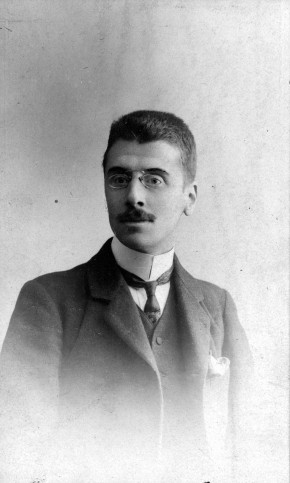
Julián Juderías y Loyot was a Spanish historian, sociologist, literary critic, journalist, translator and interpreter.
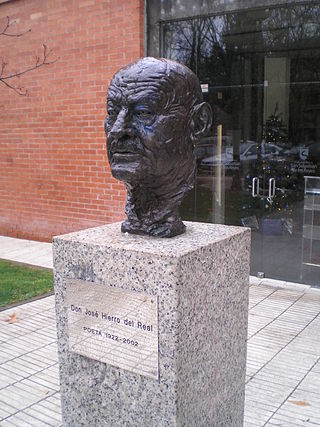
José Hierro del Real, sometimes colloquially called Pepe Hierro, was a Spanish poet. He belonged to the so-called postwar generation, within the rootless and existential poetry streams. He wrote for both Espadaña and Garcilaso magazines. In 1981, he received the Prince of Asturias Awards in Literature, in 1998 the Cervantes Prize and he received many more awards and honours.
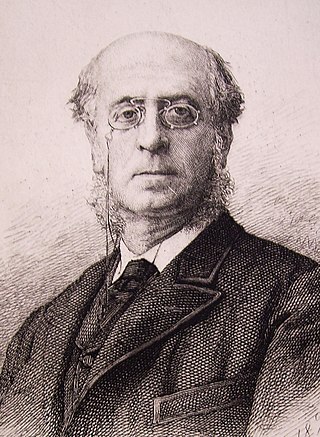
Manuel Silvela y Le Vielleuze KStJ was a Spanish politician, lawyer, writer and journalist who held several importante governmental offices, such as Minister of State and Councillor of State.
José García Nieto was a Spanish poet and writer. In 1996, he was awarded the Miguel de Cervantes Prize. Along with Gabriel Celaya, Blas de Otero and José Hierro, he was a member of the post-war generation of Spanish poets.
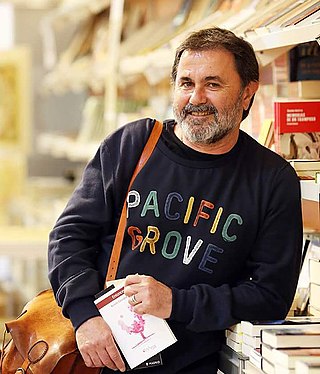
Aurelio González Ovies is a Spanish writer and poet from Asturias. He has a Ph.D in Classical Philology and he is a Professor of Latin Philology at the University of Oviedo. In words of the writer Victor Alperi:

Francisco de Asís Alarcón Estaba is a Venezuelan writer, poet and editor. He was born with the name Francisco de Asís Alarcón Estaba, and is the son of Pedro Alarcón Lazarde and Rosario Estaba de Alarcón.
Antonio Colinas Lobato is a Spanish writer and intellectual who was born in La Bañeza, León, Spain on January 30, 1946. He has published a variety of works, but is considered to be above all a poet. He won Spain's National Prize for Literature in 1982, among several other honors and awards.
Juan José Domenchina Moreu was a Spanish poet and literary critic from the "Generation of '27".
María Rosa de Gálvez or María Rosa Gálvez de Cabrera, was a Spanish poet and playwright during the Age of Enlightenment and Neoclassicism periods.
Cayetano María Huarte Ruiz de Briviesca was a Spanish writer and poet. He was born in Cádiz in 1741 and died in 1806.

Pilar Paz Pasamar was a Spanish poet and writer whose work has been translated into Italian, Arabic, French, English and Chinese. She was a member of the Cádiz branch of the 1950s poetic generation. She was a member of the Real Academia Hispano Americana de Cádiz since 1963. Her awards and honors include second place from the Premio Adonáis de Poesía for "Los buenos días" (1954), Adoptive Daughter of the city of Cádiz (2005), Meridiana Prize of the Andalusian Institute of Women (2005), included in the section "Own Names" of the Instituto Cervantes, and Author of the Year by the Andalusian Center of Letters of the Junta de Andalucía (2015). The city council of her hometown annually awards the Pilar Paz Pasamar Prize for short stories and poetry by women.
Mario Martín Gijón is a Spanish writer, poet and literary critic.

Guillermo Diaz-Plaja Contestí was a Spanish literary critic, historian, essayist, and poet.
Manuel Álvarez Ortega was a Spanish poet, translator, writer, and veterinarian. He was the director and founder of the journal Aglae, which circulated between 1949 and 1954. He wrote many of his works in Madrid, the city where he lived starting in 1951.

Francisco Rodríguez Marín was a Spanish poet, paremiologist, and lexicologist.











